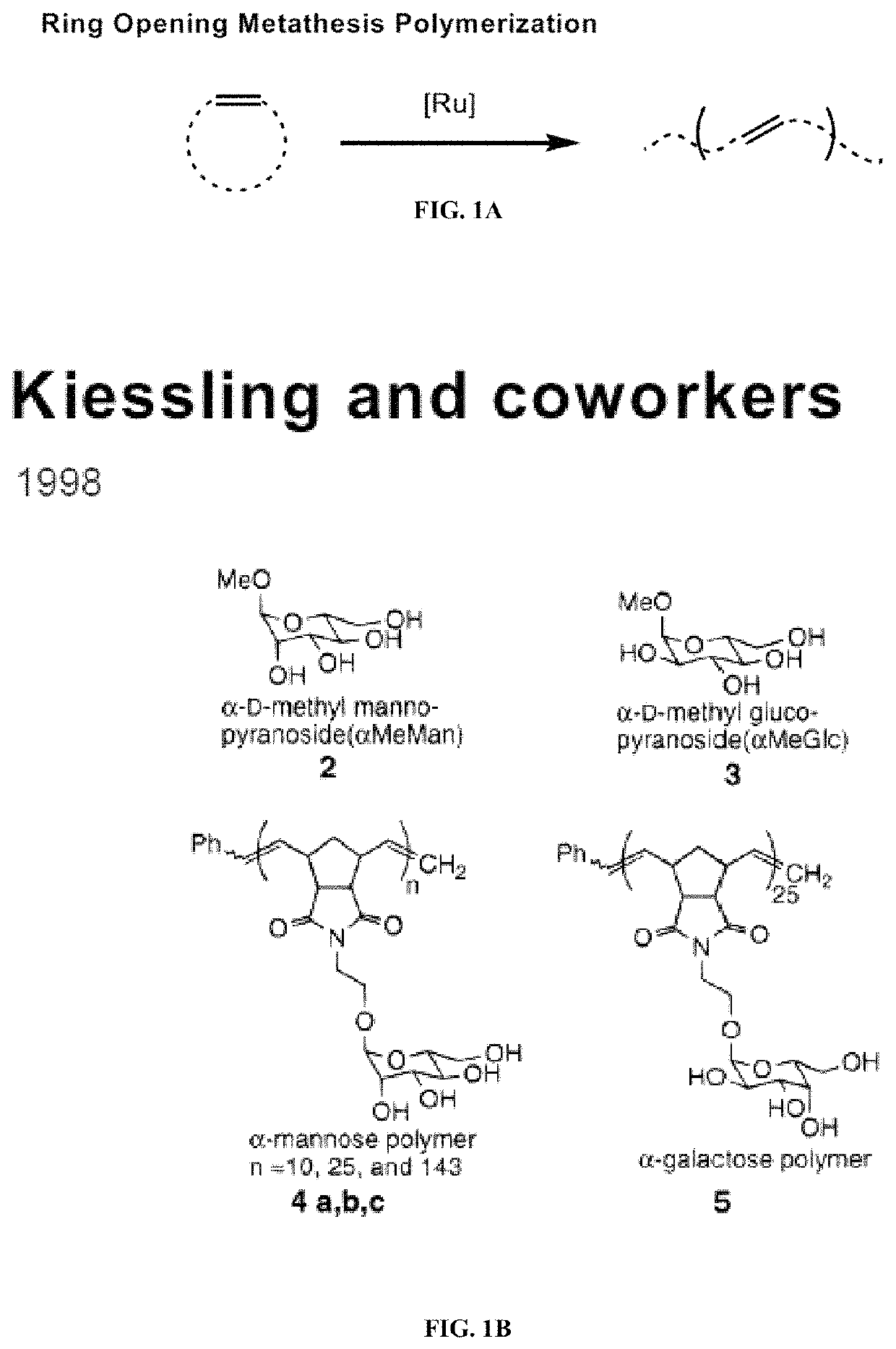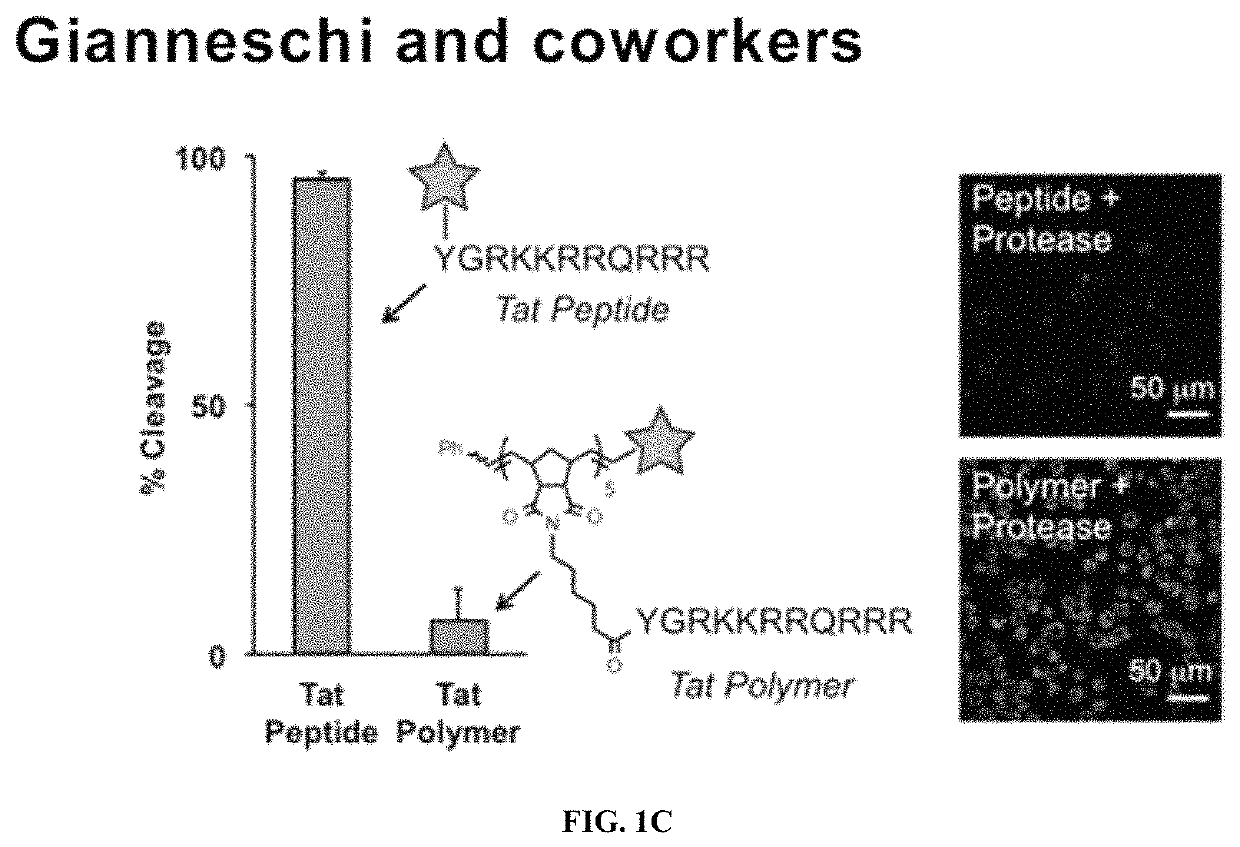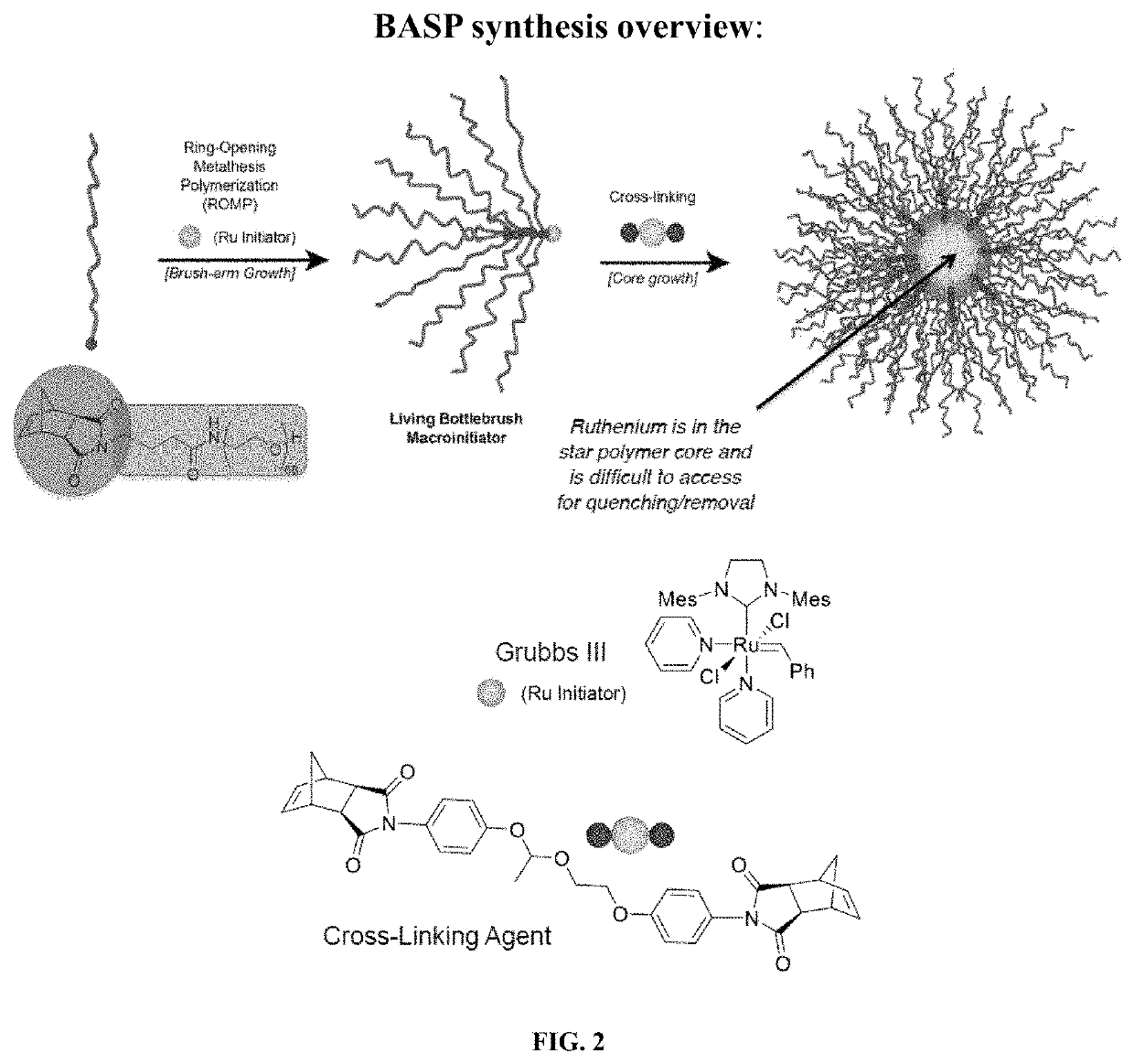Degradable polymers of a cyclic silyl ether and uses thereof
a technology polymer, applied in the field of degradable polymers of cyclic silyl ether, can solve the problems of poor degradability, limited utility in certain fields, lack of degradability, etc., and achieve the effects of wide application range, wide application range, and wide application rang
- Summary
- Abstract
- Description
- Claims
- Application Information
AI Technical Summary
Benefits of technology
Problems solved by technology
Method used
Image
Examples
examples
[1115]In order that the present disclosure may be more fully understood, the following examples are set forth. The synthetic and biological examples described in this application are offered to illustrate the compounds, pharmaceutical compositions, and methods provided herein and are not to be construed in any way as limiting their scope.
Materials, General Methods, and Instrumentation
[1116]All reagents were purchased from commercial suppliers and used without further purification unless noted or stated otherwise. Grubbs 2nd Generation catalyst was purchased from Sigma-Aldrich, dissolved in dry dichloromethane, and concentrated under vacuum before use. Grubbs 3rd generation catalyst (referred to as G3; see FIG. 2) was generated directly from commercially available 2nd generation catalyst following literature procedure (Love, J. A.; Morgan, J. P.; Trnka, T. M.; Grubbs, R. H. Angew. Chem., Int. Ed. 2002, 41, 4035-4037).
[1117]Monomers were synthesized according to literature procedures....
example 0
of Precursor TBS-Protected Alkynol
[1121]
[1122]The synthesis of TBS-protected alkyne S1 was adapted from a literature protocol (A1-Shuhaib, Z. et al, Tet. Lett. 2013, 54, 6716-6718). 20.0 g (285 mmol) of 3-butynol, a clear liquid, was dissolved in 200 mL of dry THF in an oven-dried 1 L flask charged with stir bar. Next, 43.0 g (285 mmol, 1 eq.) of tert-butyldimethylsilyl chloride and 29.1 g (428 mmol, 1.5 eq.) of imidazole were added. The reaction was stirred for two hours at room temperature, during which time a significant amount of white precipitate formed. The mixture was filtered to remove imidazolium salt and was concentrated by rotary evaporation. The remaining residue was diluted with 200 mL of diethyl ether, washed with 200 mL of saturated ammonium chloride solution and 200 mL of saturated sodium bicarbonate solution, dried over sodium sulfate, and concentrated to yield 51.3 g (98%) of S1, which was utilized in the next step without further purification. NMR spectra matched ...
example 1
of TBS Diol
[1126]
[1127]The reduction of TBS-protected alkynol was performed via an adaptation of literature procedure (Al-Shuhaib, Z. et al, Tet. Lett. 2013, 54, 6716-6718). The starting TBS-protected alkynol was prepared as described above or following literature procedure (Al-Shuhaib, Z. et al, Tet. Lett. 2013, 54, 6716-6718). To a 1 L flask charged with stir bar was added 210 mL of absolute ethanol and 3.57 (14.4 mmol, 0.13 equiv.) of nickel acetate tetrahydrate. The solution was placed under a hydrogen atmosphere using hydrogen-filled balloons. To the mixture was carefully added a suspension of 735 mg (19.5 mmol, 0.178 equiv.) of sodium borohydride in 45 mL of ethanol, turning the light teal solution a dark black color. After stirring for 30 minutes, 3 mL (3.9 g, 64.5 mmol, 0.586 equiv.) of ethylene diamine was added followed by a solution of 23.7 g (110 mmol) of TBS alkynol in 75 mL of ethanol. The reaction was stirred at room temperature and monitored via NMR. After five hours...
PUM
| Property | Measurement | Unit |
|---|---|---|
| pH | aaaaa | aaaaa |
| molar ratio | aaaaa | aaaaa |
| polymerization time | aaaaa | aaaaa |
Abstract
Description
Claims
Application Information
 Login to View More
Login to View More - R&D
- Intellectual Property
- Life Sciences
- Materials
- Tech Scout
- Unparalleled Data Quality
- Higher Quality Content
- 60% Fewer Hallucinations
Browse by: Latest US Patents, China's latest patents, Technical Efficacy Thesaurus, Application Domain, Technology Topic, Popular Technical Reports.
© 2025 PatSnap. All rights reserved.Legal|Privacy policy|Modern Slavery Act Transparency Statement|Sitemap|About US| Contact US: help@patsnap.com



